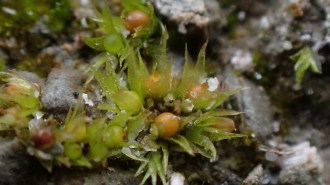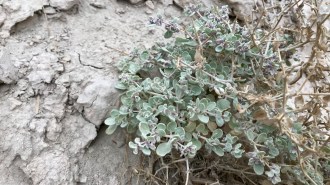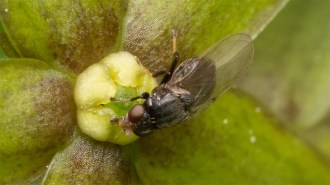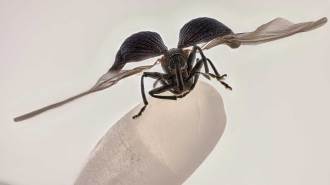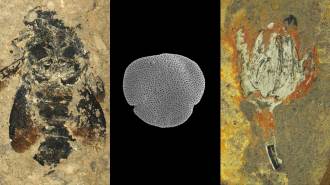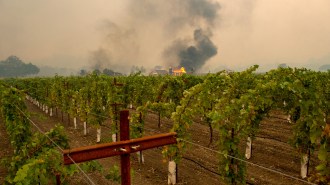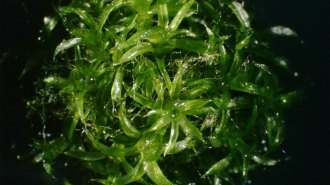A hidden world of fungi abounds inside healthy leaves, and scientists are beginning to learn what it’s doing there. A research team reports that in tree leaves, these fungi, called endophytes, can limit damage from attacking disease agents.
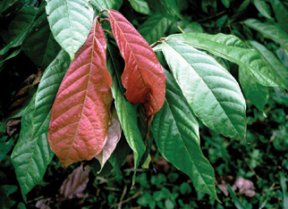
In tests on chocolate trees in Panama, leaves colonized with endophytes that don’t cause disease coped better with a vicious pathogen than fungusfree leaves did, report A. Elizabeth Arnold of Duke University in Durham, N.C., and her colleagues. “Here’s a major role for broad-leaved-tree [endophytes] that’s never been noticed,” she says.
The endophytes in grasses fight pathogens, explains Keith Clay of Indiana University in Bloomington. He welcomes the similar result in these trees as “pretty dramatic.” He adds, “I’m sure it’s going to get a lot of attention.”
Clay predicts that ecologists will look for similar effects in other broad-leaved trees and muses that cacao growers might find ways to harness the endophytes’ disease-fighting power.
Endophytes have turned up in every plant tested, from Douglas firs and grasses to mosses and liverworts, says Arnold. Clay and other grass researchers have demonstrated fungal benefits that include reduced appeal to grazing animals, for temperate-zone grasses.
Grasses and tropical trees have very different fungal tenants, says Arnold. Unlike the grass inhabitants, the tree endophytes are quite diverse and colonize emerging leaves instead of passing from one generation to the next.
Arnold and her colleagues surveyed fungi in cacao leaves at five sites in Panama. The similarity in fungal residents decreased as the sites grew more distant, the researchers report in an upcoming Proceedings of the National Academy of Sciences.
Yet the pattern of endophytes isn’t merely geographical, the researchers conclude. Different tree species at the same site tend to have different mixes of colonizers. In lab experiments, extracts of leaves from different tree species influenced the growth rates of various fungal types and even altered the outcomes of fungus-versus-fungus growth competitions.
Arnold and her colleagues chose seven kinds of fungi that showed up frequently in leaves of the local trees and won laboratory growth competitions. The researchers introduced these fungi to both young and old leaves on cacao seedlings that had been kept free of fungi.
Then, the scientists inoculated some of the leaves with a strain of Phytophthora, one of the three major pathogens in commercial cacao and a relative of the organism behind Irish potato blight. Compared with leaves without endophytes, the leaves housing the friendly colonizers lost about half as much area to invaders and were more likely to survive.
The bonus turned out to be biggest for the older leaves. The fungi may compensate for the waning of defensive chemicals as leaves age, says Arnold.
Plant pathologist Christopher Schardl of the University of Kentucky in Lexington welcomes the work as a “very important advance.” Aside from grass studies, he says, “there has been very little evidence of defensive mutualisms between fungi and plants.”
****************
If you have a comment on this article that you would like considered for publication in Science News, send it to editors@sciencenews.org. Please include your name and location.
